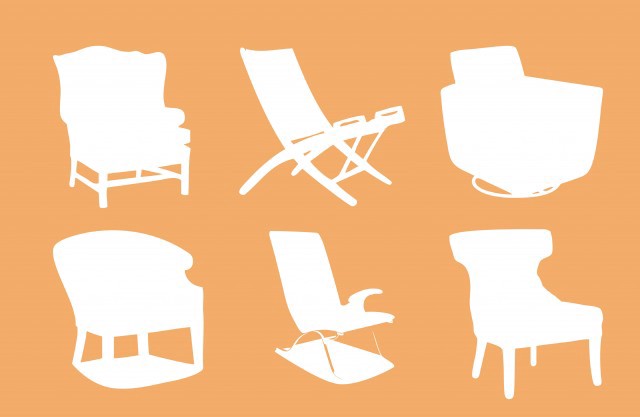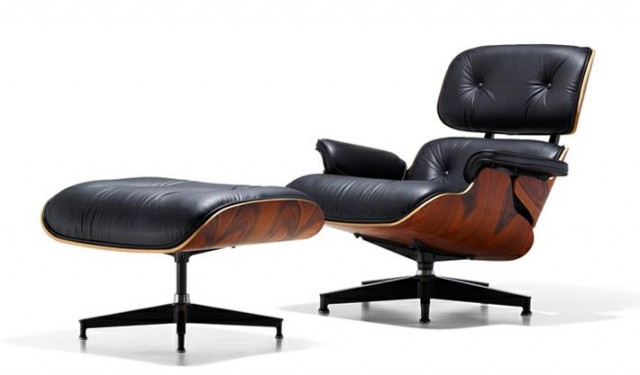“Original Is Almost Not a Thing”

This post is brought to you by got milk? Find out what else is fake at scienceofimitationmilk.com.
Jane’s little brother, Andrew Golombisky, is a furniture designer currently working in Ho Chi Minh City, Vietnam, and a good part of his work involves designing antique-inspired pieces. They sat down to chat about originality, authenticity, and design.
Jane Marie: [Wasting no time after convincing her bro to help her out with a project for her blog.] What’s the difference between a replica and a knockoff?
Andy: As far as furniture goes, if it’s a replica of an antique piece that doesn’t have a credited designer and no intellectual property rights at issue, it’s pretty much fair game. And, to get technical, if you’re gonna work from any design whatsoever that belongs to somebody else, it needs to be changed by at least 20%.
JM: How do you measure that! That’s crazy. Remember when we went to that store in New York — I’m not gonna say the name, but they sold midcentury or Danish modern furniture — and you were blown away, just appalled, by how close their designs were to the real thing?
A: Yeah! Those were blatant knockoffs and very poorly done.
JM: How were they able to be a store?
A: Well, it’s like how do they sell Louis Vuitton handbags on the street? It’s the same thing. Someone could come in and shut them down pretty much any time, but at that point you’re chasing the peddlar. A lot of companies, unless it’s a huge store making a dent in their profits, they’re not going to spend the time going after them. I suppose if someone in New York at a company that owns a lot of rights, say Herman Miller, was going around seeing a lot of the exact same manufacturing of a knockoff everywhere, they might go after them and then it would probably be a Chinese manufacturer. I don’t mean to sound …
JM: Chinesist.
A: Chinesist, yeah, well they’re the kings of it. But back to the replica thing — things like Chippendale or Hepplewhite, those are a style of furniture now. So you can make a Chippendale style chair that Thomas Chippendale never designed. And he made books of his designs for other cabinet makers to use. And there were orthographic scale drawings in them; they’re really funny to look at. But people don’t do that now with their designs. Back then, I think he did it because they were trying to sell books; it was after the advent of the printing press.

JM: Interesting. At your company you guys do some replicas, right?
A: Right. We actually have a line called “Rep.li.ca.”
JM: And where do you get the inspiration for those pieces? Do people have antiques or do you look through books or what?
A: Absolutely we look through books and antique shops. We have a library that contains thousands of books and auction catalogs from Christies and Sotheby’s and other auction houses. Those are great sources for inspiration. We’ve also done a collection for Althorp House.
JM: What’s that?
A: It’s Princess Di’s brother’s. He’s the Earl of Spencer. We do the licensed replica furniture line of the pieces inside the house. Most everything inside was commissioned for the place, so all of the property belongs to Althorp, the estate, and they licensed it to us.

This piece, “Cocktails at Althorp,” is a bar and a tiny house all in one!
JM: What is the process like to design a piece of furniture?
A: It’s all market driven for the most part. There are two big markets in fall and spring at High Point, North Carolina. And those are our two big shows and we see how our furniture does at the shows. We get a lot of feedback from our dealers and our reps there — what we’re lacking, what we’ve got too much of. You have furniture reps who sell to retailers; that’s what the furniture shows are for, really. You need a buyer’s pass to even get in. There needs to be a reason you come in because… if you’re letting everybody in the door, people have cameraphones and this and that and honestly will go through and take photos of everything you’ve done and within a month it’s being done again.
JM: The knockoffs.
A: Yeah. We get knocked off just as fast as anybody, so we just never stop. We just keep designing, six days a week every week.
JM: So that by the time someone knocks off your last line, you’re already on to the next thing?
A: That’s exactly right. And we are constantly pushing the envelope of new materials. When I say “new materials” I mean new applications of existing materials, obviously. It’s very hard now to find a truly new new material now. I mean, there’s carbon nanotubes, but you don’t incorporate those into…
JM: I don’t know what you’re talking about….
A: Okay [laughs]… Well, okay so the exciting time for new materials was the 19th and 20th centuries with the industrial revolution. The Eames became famous because they were working with laminated veneer plywood. Plastics were really developing as a good material. Fiberglass. Lightweight alloys.
JM: What are the “new” things now?
A: I think the new things now are kind of a reinventing old world crafts. We’ve got some very cool upholstered benches and ottomans — very large pieces — and we’ve sourced old, handmade used rugs and we’ve upholstered things with the rugs. And they’re absolutely gorgeous.
JM: I feel like I would like doing replica design because you have a jumping off point. Do you prefer that, or do you prefer creating original designs?
A: Original “original” design is almost not a thing.
JM: Really?
A: In my mind it isn’t. You can ask any artist in the world, “I’ve never seen a painting like this in my life. What’s your inspiration?” and they have an answer.
JM: What do you think the last piece of truly “new” furniture was? Like original. A groundbreaking design.
A: Hm…
JM: Bean bag chair? Water bed? [laughs]
A: Probably! Haha … a waterbed. I mean, I dunno? A chair is always a chair. A table is always a table. But yes, those are two very good examples.
JM: Thank you.
A: Mm hm. No, but seriously, I mean, it’s gonna be so cliche to say this … but the last new design would have to be … because it changed the 20th century and Ikea would not exist without it…
JM: What is it!
A: The Herman Miller Eames chair. The plywood chairs.
JM: The potato chip chair?
A: Yep. The potato chip chair.
JM: And then the other one that’s like an easy chair.

A: The Eames Lounge. They still make it. It’s one of the longest produced unchanged designs in furniture. I think it opened people’s eyes.
JM: Because you didn’t need solid wood?
A: Because plywood could be cheap and beautiful. It was a new material and it was cheap and easy to manufacture. Those were the two real driving forces. Keep in mind it was the 1950s, people were coming back from the war, manufacturing was happening in middle America, and it was the baby boom.
JM: And everyone was buying a house.
A: And everyone can have furniture. That’s what this was for. You bought the box, took it home, put it together, just like Ikea is today.
JM: So even Ikea is a replica?
A: Kind of! Ikea does some stuff that no one does, but yeah, those Herman Miller pieces were the last big, original thing.
Sponsored posts are purely editorial content that we are pleased to have presented by a participating sponsor, advertisers do not produce the content.